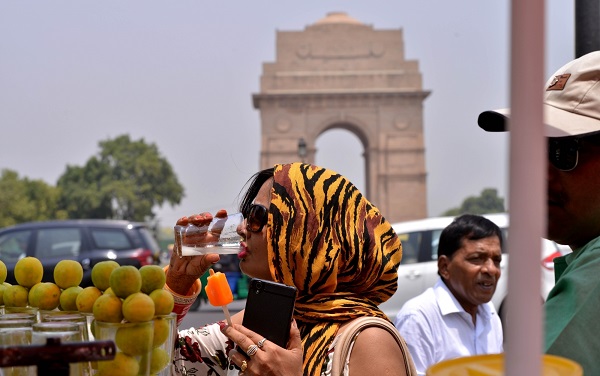New Delhi, (Samajweekly) Starting from mid-March, Delhi-NCR has experienced two heat wave conditions and experts believe that the humidity factor has played a major role.
Maximum temperatures above normal over many parts of west-central and north-west India were prevalent for several days leading to the first heat wave from March 11 to 21. The second spell, which started on March 26 and is still underway, is one of the longest for the March-April heat waves.
According to data from the India Meteorological Department (IMD), the mean maximum temperature was 32.9 degrees Celsius against its normal value 29.6 degrees, which is 3.3 degrees above the climatological mean for the month. Against the 15.9 mm rainfall for the month, the Safdarjung Observatory, Delhi’s base station,recorded zero rainfall in March. Relative humidity for the month hovered around 60-70 per cent in the initial days and lowered down to less than 30 per cent.
Avikal Somvanshi, Programme Manager, Urban Analytical Lab at the Centre for Science & Environment, explained: “March has never been as dry as April, May, and June. March is a transition month. The average humidity in March is 47 per cent. This year’s data shows, it was drier than average March at about 40 per cent.”
The reasons for very low humidity in March are mainly two.
“March usually has some rainfall because of western disturbance (WD). This year, there has not been any WD. Secondly, there was some anti-cyclonic pressure developed over north India. Because of that there was no WD and as a result, there was unusually low humidity (and therefore, more heat) during March,” Somvanshi said.
“This is an ongoing impact of La Nina. Because of La Nina, we had January as one of the cold and wettest months. And now, this heat in March.
“Usually, the anti-cyclonic development over north India happens in mid-April, because of which temperature increases and humidity decreases. So, the entire north India is dry. But this year, it happened in mid-March itself, so March had unusually low humidity compared to previous Marches,” he added.
In March, the month starts with generally 60-70 per cent humidity, which decreases to about 40-odd per cent by March end. This year, instead of March end, this 40-point level was reached in mid-March itself. And April already has low humidity, he said.
Humidity has been increasing in north India over the last few years and the combination of high temperature and high humidity increases the heat index; what we call in popular parlance, ‘feels like’ temperature – ’25 but feels like 35′. This phenomenon happens generally in the pre-monsoon period, Somvanshi explained.
Agreeing that for Delhi, March is a transition month, IMD’s former director general (meteorology) Ranjan Kelkar said: “February is a winter month and March is supposed to be a summer month. The transition – that usually occurs around the festival of Holi – sometimes is very smooth and sometimes, it is very abrupt. This transition can be either way – cold weather may extend into March or warm weather may fit in early.”
Kelkar also pointed towards the role of WD and the wind.
“In winters, if there is going to be WDs, they come, as the name says, from west side of India – from Iran, Iraq, Afghanistan, Pakistan. They bring in moisture, so WD in winters will bring rains in north Indian plains and snow in the upper regions of the Himalayas.
“Another factor is wind. Variations in rainfall are highly localised as it is dependent on local terrain and topography. But when the ‘wind’ is involved, a large area is influenced by the wind. Dry wind is blowing, then a large part of the country will be dry,” he said.
“The winds are dry (now) as they are not bringing in any moisture. These are southerly winds. In Delhi, April and May are always dry months. Dust storms are common in April and May because there is no moisture,” Kelkar said.
“In June, as the monsoon approaches, the atmosphere becomes laden with moisture and that is worse because that makes Delhi’s atmosphere very stuffy. This is the time when Delhi gets thunderstorms with rains.”










